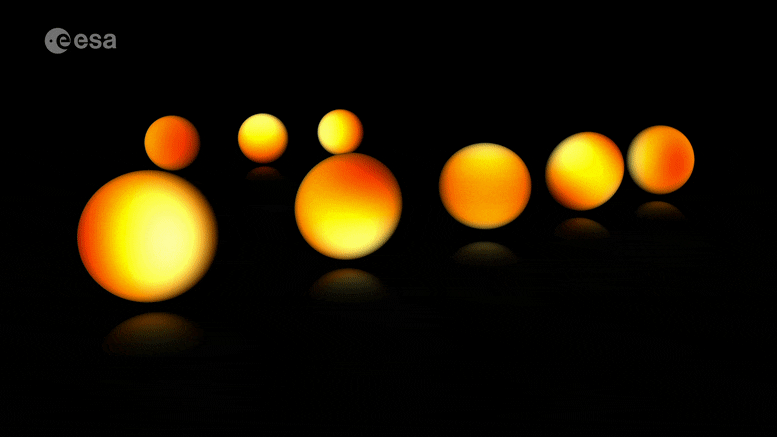The recent discovery announced by the ESA’s Gaia team on June 13 highlights an astonishing phenomenon known as “stellar seismic activity,” which is far more catastrophic than earthquakes on Earth.
Previously, earthquakes were considered a “specialty” of Earth; however, in recent years, NASA has discovered that Mars also experiences seismic activity, albeit through a different mechanism.
But this is the first time “stellar seismic activity” has been confirmed. ESA describes it as one of Gaia’s most surprising discoveries. These are small movements on the surfaces of stars, which ESA likens to tsunamis that alter the shapes of stars.

Animation showing the deformation of multiple stars – (Image: ESA)
Previously, the Gaia satellite detected oscillations using the radial velocity measurement method, causing stars to swell and contract periodically while maintaining their basic spherical shape.
However, what Gaia has just recorded is on a larger scale, a form of super earthquake that alters the global shape of the star. According to scientists, this violent form of stellar seismic activity has been found on “non-traditional” celestial bodies, which are more powerful than their counterparts.
“Stellar seismic activity teaches us a great deal about stars, particularly their internal processes,” said Dr. Conny Aerts from Katholieke University Leuven in Belgium, a member of the Gaia team.
To record this data, researchers analyzed detailed spectral data from NASA, where starlight is separated into its constituent colors, revealing a wealth of information about the composition and variations in the activity of the star.





















































